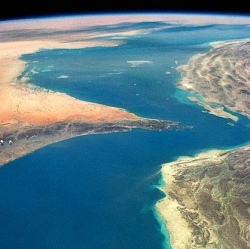
Europe has begun to roll out a data superhighway in orbit above the Earth. The first node in the network is a telecommunications satellite that was launched from Baikonur, Kazakhstan. It will use a laser to gather pictures of the planet taken by other spacecraft and then relay them to the ground.
One benefit will be to put information on natural disasters, such as flooding and earthquakes, into the hands of emergency responders far faster than has previously been possible. Currently, it can take hours to get the pictures taken by Earth observation satellites down on the ground.
Part of the reason is that spacecraft can only transmit their images when they pass over a receiving dish, and they will have visibility of this antenna for just 10 minutes in most cases during every 90-minute tour around the globe.
The European Space Agency’s (Esa) answer is to fire the pictures upwards instead, via laser, to another satellite much higher in the sky that has a constant view of the ground station.
The agency recently put up two Earth observers that are equipped with optical transmission equipment. These will now be able to offload their data through the new relay satellite, which is to be positioned 36,000km above the equator at 9 degrees East.
Testing by Esa’s industrial partner, Airbus Defence and Space, shows it should be possible for the system to put pictures on the desks of the people who need them within 20 minutes of those images being acquired.
